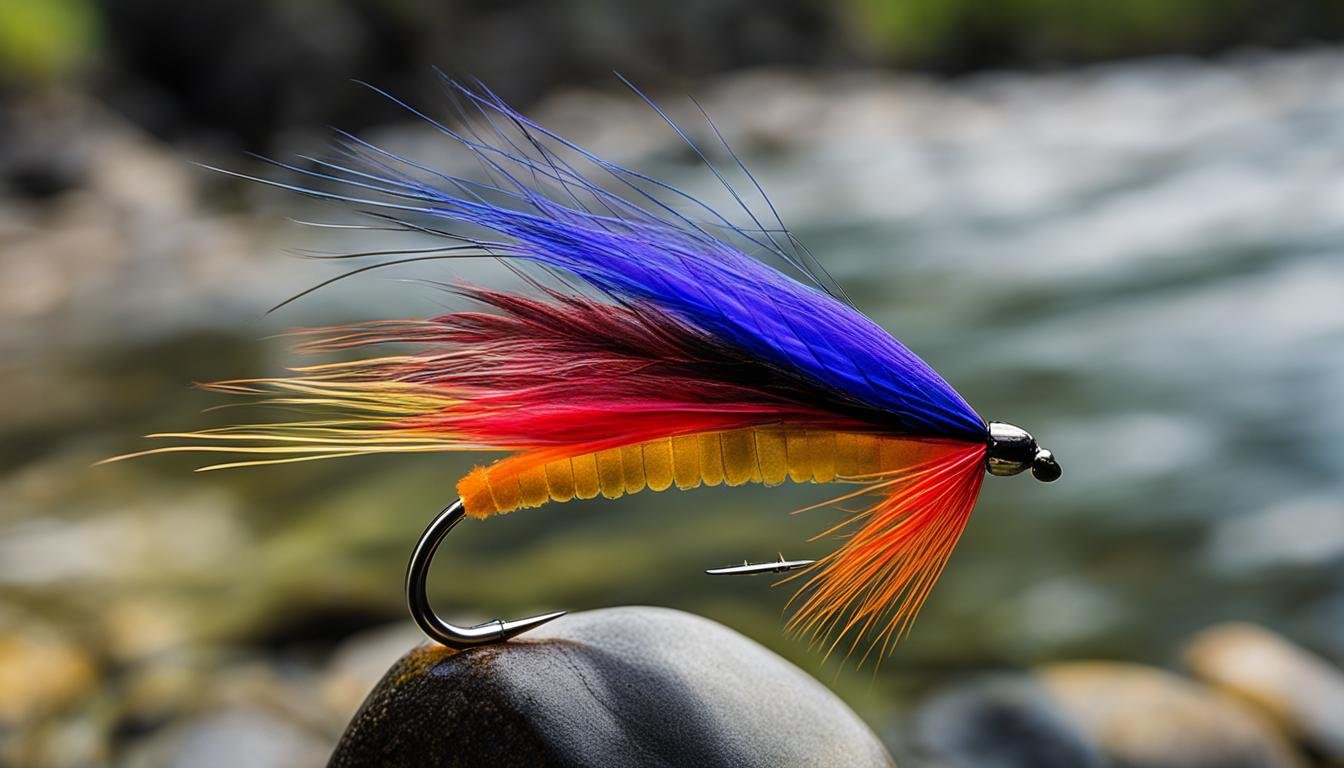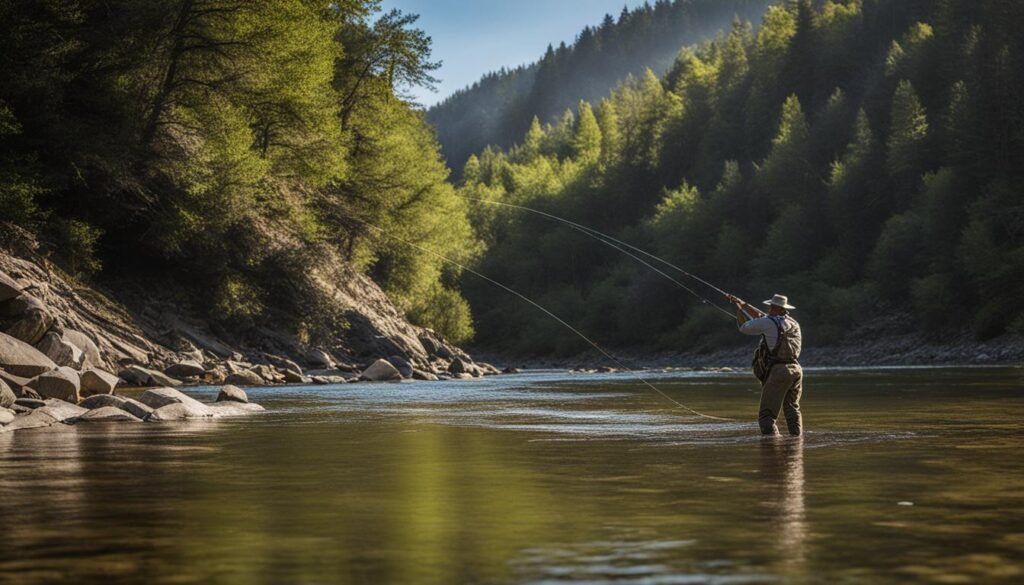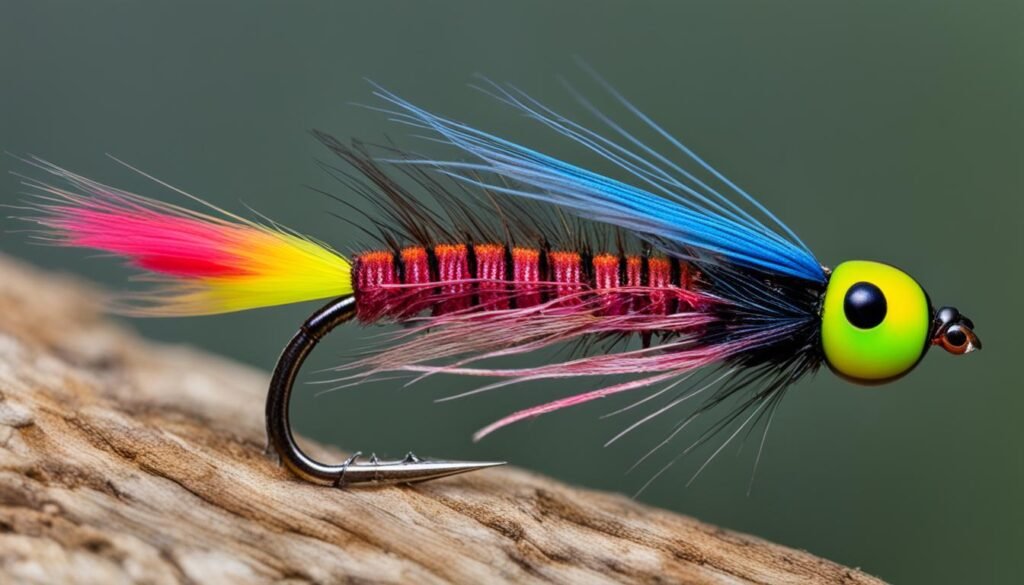Streamers are a popular choice for fly fishing enthusiasts looking to catch trout and other fish species. To maximize your success with streamer flies, it’s important to use the best techniques and select the right flies for the conditions you’re fishing in.

Best Trout Streamers
When it comes to trout fishing, choosing the right streamer patterns can greatly increase your chances of success. Here are some of the best trout streamers that every fly fishing enthusiast should consider:
1. Autumn Splendor
The Autumn Splendor streamer is highly versatile and known for its effectiveness in catching trout throughout the year. Its combination of flashy colors and attractive movement make it a go-to fly for many anglers.
2. Slumpbuster with Cone
The Slumpbuster with Cone is a popular choice for targeting trout in deeper waters. The conehead helps the fly sink quickly, while the marabou tail and flashabou fibers create a lifelike swimming action that entices trout to strike.
3. Zonker-Grizzly
The Zonker-Grizzly streamer is a classic pattern that mimics the appearance of small baitfish. Its tantalizing movement and realistic colors make it irresistible to trout, especially in streams and rivers with a strong current.
4. Muddler Minnow
The Muddler Minnow is a versatile and effective streamer that imitates various types of prey fish. Its deer hair head not only adds buoyancy but also creates a disturbance in the water that attracts aggressive trout.
5. Muddy Buddy
The Muddy Buddy streamer is a great choice for fishing in murky or stained water conditions. Its dark coloration and large silhouette make it highly visible, allowing trout to easily spot and strike the fly.
When selecting trout streamers, it’s important to consider factors like water conditions, the behavior of the fish, and the natural colors of the prey fish in the area you’re fishing. Experimenting with different streamer patterns and techniques will help you find the most effective combination for your fly fishing adventures. Remember, the key is to mimic the movements and appearance of the trout’s natural prey to trigger a predatory response. So stock up on these top trout streamers and get ready for some exciting fly fishing action!
Additional Streamer Fly Patterns
In addition to the best trout streamers mentioned in the previous section, there are many other streamer fly patterns that can enhance your fly fishing experience. These patterns offer unique designs and characteristics, making them effective in various fishing situations. Whether you’re a beginner or an experienced fly angler, exploring different streamer fly patterns can help you find success on the water.
One popular streamer fly pattern is the Dirty Hippie. With its flashy appearance and pulsating action, this fly can attract the attention of aggressive fish species. The Olive Baby Gonga is another great option, especially when targeting trout and bass in freshwater environments. Its lifelike appearance and olive coloration make it a reliable choice for imitating small baitfish.
The Silver/Gunmetal Kreelex is highly effective in both freshwater and saltwater fishing. Its metallic coloration and realistic movement mimic a wounded baitfish, triggering predatory instincts in a wide range of fish species. For those targeting larger fish, the Articulated Fathead is a popular choice due to its size and lifelike swimming action. This fly is particularly effective when targeting pike, muskie, and predatory saltwater species.
Streamer Fly Patterns:
- Dirty Hippie
- Olive Baby Gonga
- Silver/Gunmetal Kreelex
- Articulated Fathead
- Boogeyman
Adjusting Depth and Retrieve Speed

One of the key techniques in streamer fishing is adjusting the depth and retrieve speed of your streamer fly. By experimenting with these factors, you can significantly increase your chances of attracting and hooking fish. Here are some tips to help you optimize your streamer fishing technique:
Vary Your Depth:
Trout behavior can vary depending on the water conditions, so it’s crucial to find the right depth for your fly. You can achieve different depths by changing your fly type, leader length, and sink rate of your fly line. Start by casting your streamer fly and counting the seconds it takes for the fly to sink to the desired depth. This will give you an idea of how deep your fly is fishing. If you’re not getting any bites, try adjusting the depth by changing to a heavier or lighter fly, lengthening or shortening your leader, or selecting a faster or slower sink rate for your fly line.
Experiment with Retrieve Speed:
The speed at which you retrieve your streamer fly can have a significant impact on its effectiveness. Vary your retrieve speed to mimic the movement of prey fish and trigger predatory instincts in trout. Start by using a slow, steady retrieve, allowing your streamer to undulate in the water. If this doesn’t entice any strikes, try a faster, more aggressive retrieve to imitate a fleeing or injured fish. Pay attention to how the fish are responding and adjust your retrieve speed accordingly. Sometimes a slight change in speed can make all the difference in enticing a strike.
Combine Depth and Retrieve:
Experimenting with the combination of depth and retrieve speed is key to streamer fishing success. In some cases, trout may be holding deep and require a slow, deep retrieve to trigger a strike. In other situations, they may be actively feeding near the surface and respond better to a faster, higher retrieve. By adjusting both the depth and retrieve speed, you can effectively cover different depths of the water column and increase your chances of hooking into a fish.
The Importance of Fly Color

When it comes to streamer fishing, the color of your fly can make a significant impact on your success. Fish are visually oriented creatures, and they are often attracted to certain colors depending on the water conditions and the behavior of their prey. Therefore, selecting the right fly color is crucial for enticing fish to bite.
One key consideration when choosing fly color is water clarity. In clear water, using brighter colors can make your fly more visible and increase its chances of being noticed by fish. On the other hand, in murky or stained water, darker colors tend to be more effective as they create a silhouette that is easier for fish to detect.
Factors to consider when selecting fly colors:
- Water Clarity: Choose brighter colors in clear water and darker colors in murky water.
- Prey Fish Colors: Observe the natural colors of the prey fish in the area and try to match them as closely as possible.
- Light Conditions: Consider the time of day and the angle of sunlight to determine the most appropriate fly color.
Tips for Successful Streamer Fishing
When it comes to streamer fishing, there are a few tips that can help you increase your chances of success. Whether you’re fishing in freshwater or saltwater, targeting trout or other fish species, these tips will come in handy.
First and foremost, it’s crucial to use the right tackle and gear for the specific species you’re targeting and the water conditions you’re fishing in. This includes selecting an appropriate fly rod, reel, line, and leader. Having the right equipment will make a significant difference in your ability to effectively present your streamer fly and hook into fish.
Secondly, varying your retrieval techniques is key. Experiment with different retrieves to see what works best in a particular situation. Sometimes a slow, steady retrieve will entice a strike, while other times a quick, erratic retrieve will trigger a fish’s predatory instincts. Don’t be afraid to switch things up and find the retrieve that produces the most action.
Another important tip is to pay attention to the behavior of the fish. Observe their movements and feeding patterns to determine the best approach. If you notice fish feeding near the surface, try fishing with a floating line and a streamer that stays higher in the water column. On the other hand, if the fish are holding deep, consider using a sinking line to get your streamer down to their level.
Lastly, patience and persistence are key when it comes to streamer fishing. It may take multiple attempts and adjustments to attract and hook a fish. Don’t get discouraged if you don’t have instant success. Keep refining your techniques, adapting to the conditions, and stay focused. The rewards will come.
Looking For More Fly Fishing Flies?
Check out our other articles on the best fly fishing flies available
